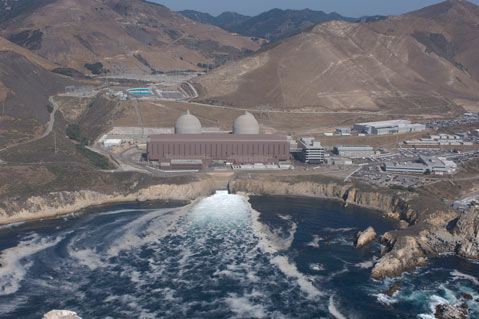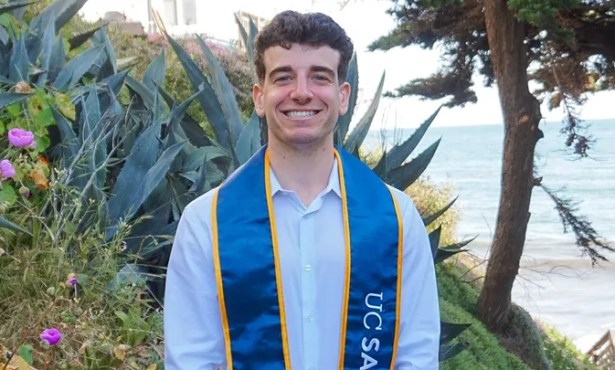Anti-Nuke Power Initiative Taking Flack
Legislative Analyst Trashes Measure, Local Activists Dubious

A statewide initiative that would effectively shut down the Diablo Canyon Power Plant in San Luis Obispo County and the San Onofre plant in San Diego was cleared last week for signature gathering by the secretary of state’s office. But in almost the same breath, the state’s Legislative Analyst’s Office warned the measure could potentially cost the state economy billions of dollars, state and local governments billions of dollars, and California ratepayers billions of dollars. While the initiative’s author, Ben Davis of Santa Cruz, insists the analyst’s doom-and-gloom report relied upon unsubstantiated allegations made by unnamed members of a state agency dominated by retired utility industry executives, even some longtime anti-Diablo Canyon activists are having second thoughts. “We have our doubts,” said David Weisman of Alliance for Nuclear Responsibility, a group fighting Diablo Canyon in Sacramento.
The initiative, known as “The Nuclear Waste Act of 2012,” was hatched by Davis, a longtime anti-nuclear activist who drafted the ballot language that shut down Sacramento’s municipally owned Rancho Seco nuclear power plant in 1988. Currently, Davis works as a delivery driver for a dog newspaper known as Bay Woof. Davis said he was moved to act by the devastation caused by the near meltdown of Japan’s Fukushima nuclear plants after the country was hit by an earthquake and tsunami this March. If approved, Davis’s measure would stop any nuclear plants from operating in California until a permanent storage solution for spent fuel rods and other nuclear wastes was provided. Currently, no such national repository exists, and none are on the drawing boards. Now that he’s been given the green light from the secretary of state, Davis has until April 16 to collect 504,000 valid signatures of registered voters to qualify for next November’s statewide ballot. That’s roughly 3,800 signatures a day.
Weisman expressed skepticism that number could be collected in so short a time frame. But even if Davis managed it, Weisman noted, PG&E — the owner of the Diablo Canyon plant
— spent $40 million on Proposition 16 two years ago to make it much harder for municipal governments to get in the energy utility business. (It lost.) Davis’s victory at Rancho Seco notwithstanding, Weisman argued, there’s a big difference between pushing a municipal ballot measure and waging a statewide ballot campaign. Should the initiative fail, Weisman warned, that could send the Legislature exactly the wrong message regarding public support for nuclear power. Davis said he agreed to disagree and predicted that Weisman and his group would come around. He said many statewide environmental groups were joining an umbrella group, Nuclear Free California, which he hopes to enlist in the cause this weekend. Based on Japan’s nuclear disaster, Davis predicted there would be a groundswell of popular support for his measure. Having studied advanced mathematics in his spare time, Davis said he’s devised formulas for collecting signatures that would rely on lots of people doing a little as opposed to some people doing a lot.
Should he get that far, Davis and his initiative will repeatedly confront the dire warnings laid down by the legislative analyst, who predicted rolling blackouts, power disruptions, and spiking energy prices should the state lose the two nuclear power plants that now generate 16 percent of the state’s energy needs. Not only that, said the analyst, but it’s such a reliable source that state energy planners build their supply calculations around it. The analyst was skimpy with details when it came to the cost savings the initiative might generate should it prevent a nuclear disaster akin to Japan’s. But the analysis was generous to a fault with the multiple “billions” that might be lost if the measure passed.
Weisman termed the report “the worst possible” for Davis. But Davis was not fazed. He said the state currently builds in a 15-20 percent supply cushion into state energy plans, so the loss of 16 percent would not be catastrophic. In the wake of Fukushima, he said, the Japanese have not experienced rolling blackouts or brownouts because the populace has cut back accordingly. And 35 percent of Japan’s electricity, he said, comes from nuclear power plants. Likewise, Davis suggested that the price spike for electricity predicted by the legislative analyst was greatly exaggerated. “It would cost the average home a dollar extra a month,” he said.



